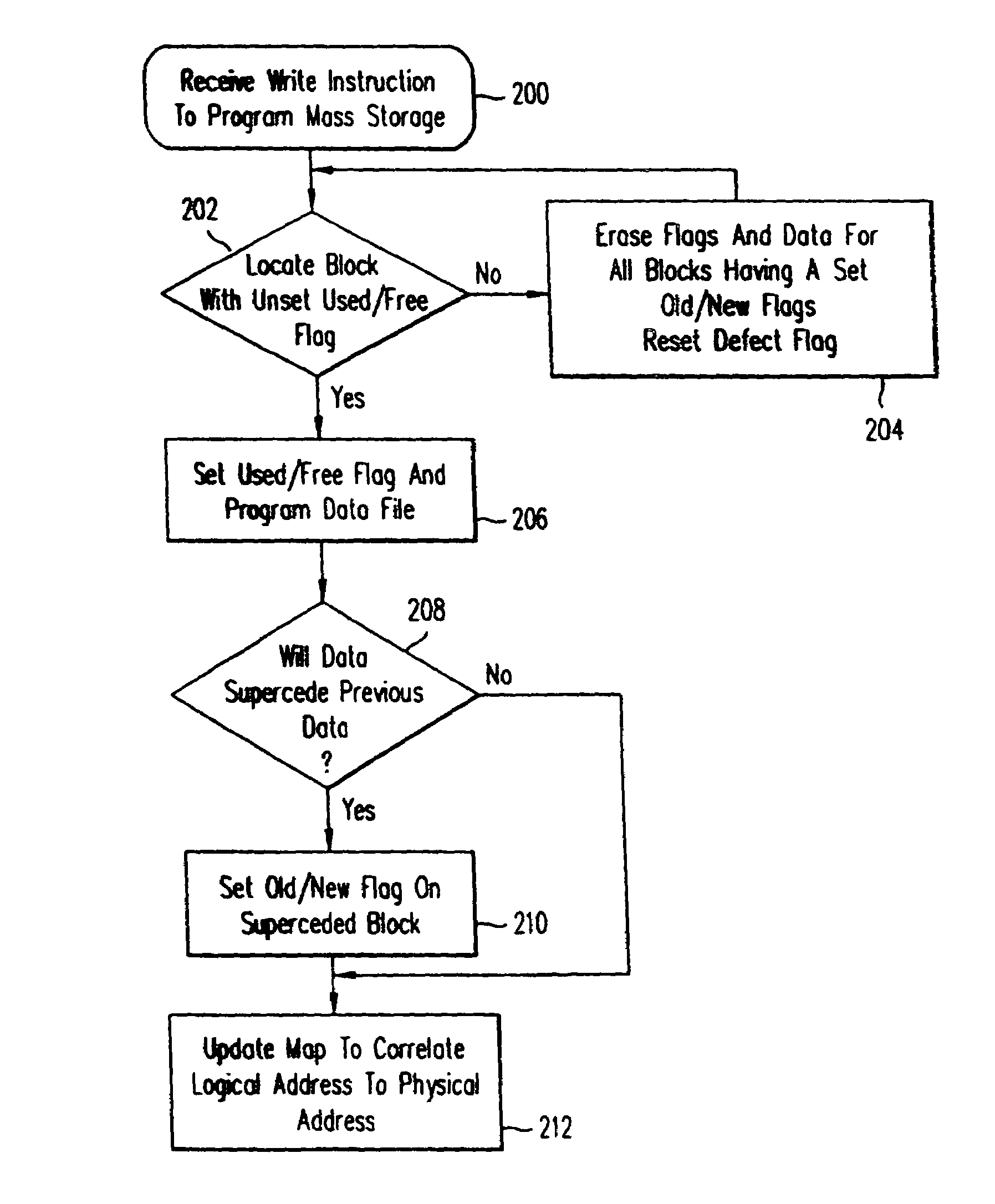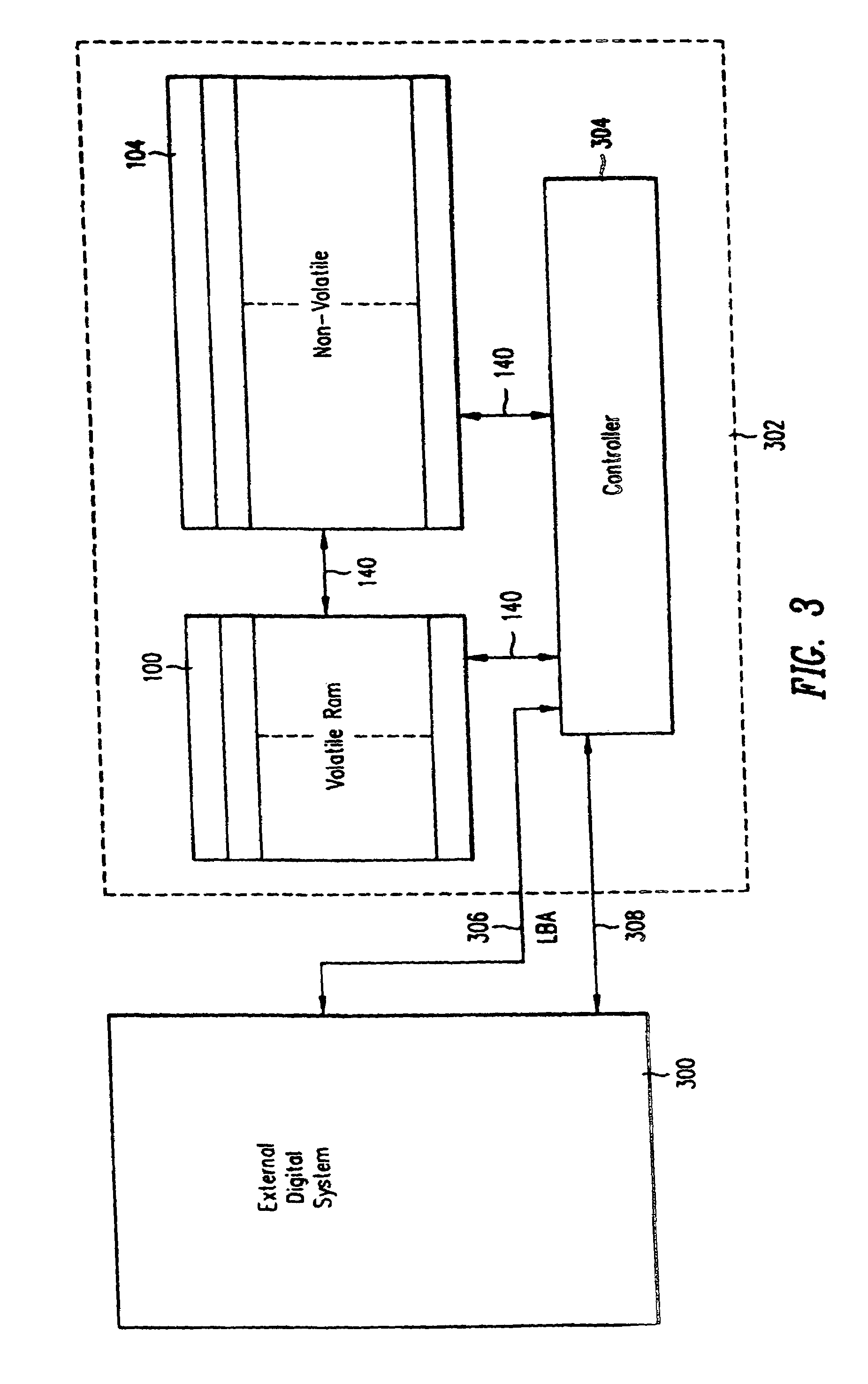Direct logical block addressing flash memory mass storage architecture
a mass storage and direct logical block technology, applied in the field of computers, can solve the problems affecting the performance of portable computers, etc., and achieve the effect of avoiding erasing cycles
- Summary
- Abstract
- Description
- Claims
- Application Information
AI Technical Summary
Benefits of technology
Problems solved by technology
Method used
Image
Examples
Embodiment Construction
[0032]FIG. 1 shows an architecture for implementation of a solid state storage media according to the present invention. The storage media is for use with a host or other external digital system. The mass storage is partitioned into two portions, a volatile RAM array 100 and a nonvolatile array 104. According to the preferred embodiment, all of the nonvolatile memory storage is FLASH. The FLASH may be replaced by EEPROM. The RAM can be of any convenient type.
[0033]The memory storage 104 is arranged into N blocks of data from zero through N−1. Each of the blocks of data is M Bytes long. In the preferred embodiment, each data block is 512 Bytes long to correspond with a sector length in a commercially available hard disk drive plus the extra numbers of bytes to store the flags and logical block address information and the associated ECC. The memory 104 can contain as much memory storage as a user desires. An example of a mass storage device might include 100 M Byte of addressable stor...
PUM
 Login to View More
Login to View More Abstract
Description
Claims
Application Information
 Login to View More
Login to View More - R&D
- Intellectual Property
- Life Sciences
- Materials
- Tech Scout
- Unparalleled Data Quality
- Higher Quality Content
- 60% Fewer Hallucinations
Browse by: Latest US Patents, China's latest patents, Technical Efficacy Thesaurus, Application Domain, Technology Topic, Popular Technical Reports.
© 2025 PatSnap. All rights reserved.Legal|Privacy policy|Modern Slavery Act Transparency Statement|Sitemap|About US| Contact US: help@patsnap.com



